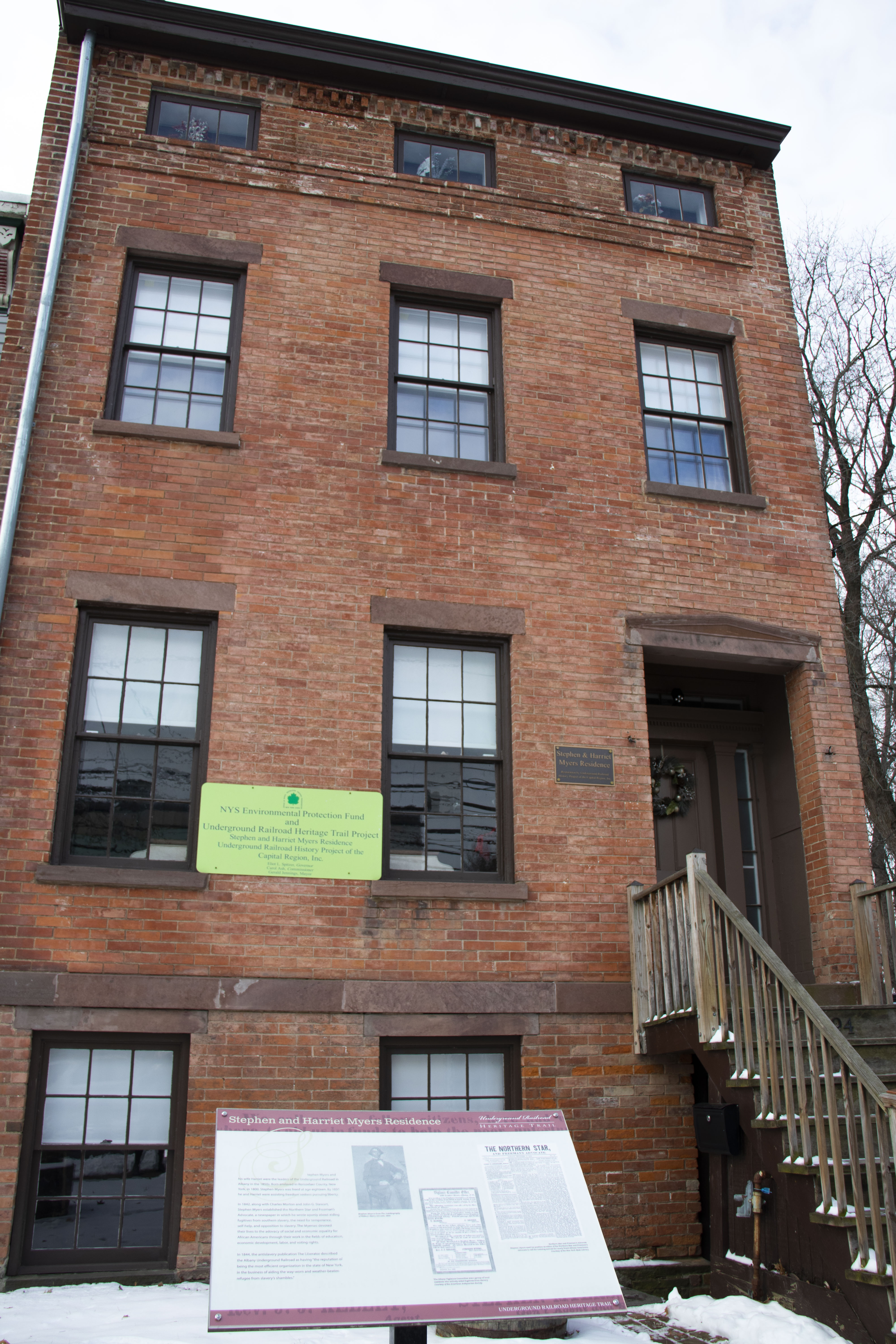
Owned and operated by the Underground Railroad History Project, the Myers Residence is using the house and objects found on site to challenge longstanding, stereotypical assumptions about free people of color before the Civil War. Its immersive approach to interpretation aspires to empower people to become agents of change in their own communities.
On Livingston Street in Albany, you’ll find a house that stands out from the rest. A mid-19th century three story brick Greek Revival that was once home to abolitionists Stephen and Harriet Myers. Today it is listed on the New York State Underground Railroad Heritage Trail and is a site on the National Park Service’s National Network to Freedom.
Purchased and saved from decades of neglect in 2004 by the Underground Railroad History Project, their goal is to preserve and restore the Myers Residence back to what it was in the 1850s. With nearly $1 million raised through grants and individual donations for preservation and restoration work on the building’s exterior, they are now turning their attention to interior restoration and interpretation.
Preservation with a Purpose
Mary Liz Stewart, Executive Director of the Underground Railroad History Project (URHP), began the organization out of a want to bring documented information about local Underground Railroad activities into her 5th grade classroom. Her husband, Paul, was writing for a local newspaper, The South End Scene was also searching for documented information about the Underground Railroad in Albany for his articles. Through their research, they uncovered stories of those who had previously been “written out” of history that provided different accounts of the Underground Railroad activism. The Stewarts realized that the story they were uncovering belonged to the community and created the URHP. The Myers Residence is an important artifact of the anti-slavery and Underground Railroad period in Albany and has been documented as headquarters for Underground Railroad activity.
I met Stewart at the Myers Residence for a tour. When I arrived at 9:30 on a brisk January morning, there were already workers mixing cement for the restoration of the back stairs and preparing the ground for the installation of a new lift. “It’s important for accessibility and to remove as many barriers as we can,” said Stewart. She pointed out that there is only one fence on the property, at the rear, which was also intentional. “People of color have traditionally been excluded, so we decided not to put up fences surrounding the property.”
The interior walls have been striped back to plain plaster, an industrial carpet protects the original wooden floors, and interior doors have been removed. It is a blank canvas. I asked about any plans to leave parts of the house in an unfinished state. “We’ve had people ask if we plan to leave one room unfinished but with all the wealthy white men’s houses in Albany… the Schuyler Mansion, Ten Broeck, Crailo...it is important to have this home of an enslaved man be restored to the same standards,” said Stewart.
Splitting with Tradition
The front room has furniture you might have found in the 1850s when Stephen and Harriet Myers lived here as well as contemporary art. There is a second empire style couch from the 1850s but rather than a “do not sit” sign, visitors are encouraged to sit. It’s part of the overall goal of the Myers Residence to help the house and its history feel touchable for today's visitors. Stewart wants people to feel connected to the house and immersed in its history. By allowing visitors to sit on the furniture, the Myers Residence splits with traditional historic house museums.
What is most striking in the front parlor is a corner devoted to the Schuyler Flatts Burial Ground Project. Created to pay tribute to the discovered remains of 14 formerly enslaved people, the remains were reinterred in decorative catafalques made from wood and designed by artists. The remains lied in state at the Schuyler Mansion Historic Site in 2016 before being buried at St Agnes Cemetery. Photos of the 14 catafalques are displayed in a corner in the front parlor along with a large mixed media sculpture. This sculpture, created by visual artist D.D. McCullough titled, “The Scales of Injustice,” focuses on the “torture and pain experience by Africans during slavery.” The sculpture was created to accompany the 14 catafalques at the Schuyler Mansion Historic Site, and was then installed at the Myers Residence after being reinterred.
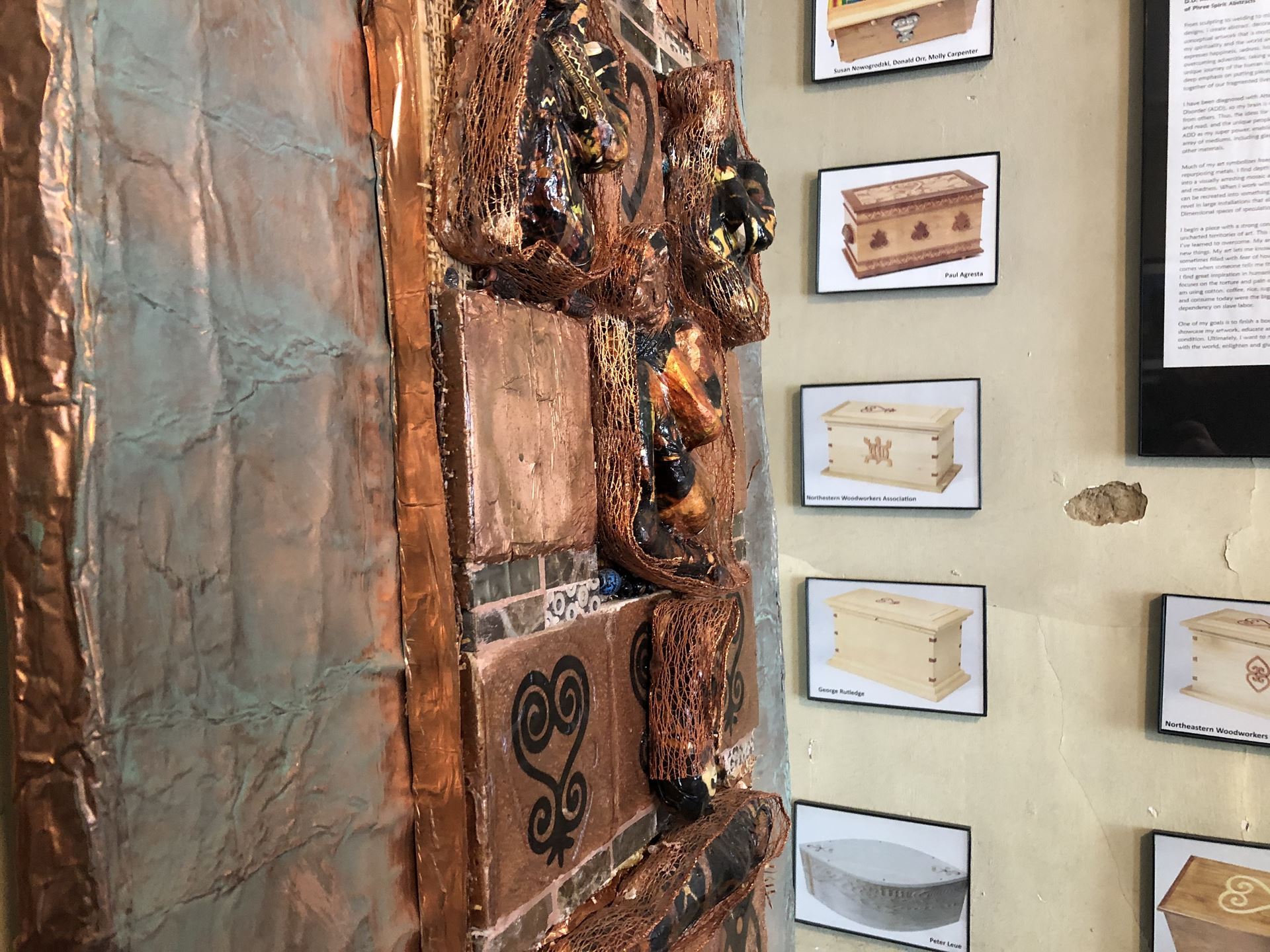 "The Scales of Injustice" by D.D. McCullough with images of artist designed catafalques displayed on the wall.
"The Scales of Injustice" by D.D. McCullough with images of artist designed catafalques displayed on the wall.
Writing and Murals on the Walls
Decorating the rest of the walls in the front parlor are signatures of some of those who have supported the Myers Residence and the URHP. The signatures punctuate the unfinished plaster and reflect the community effort that has surrounded this preservation project.
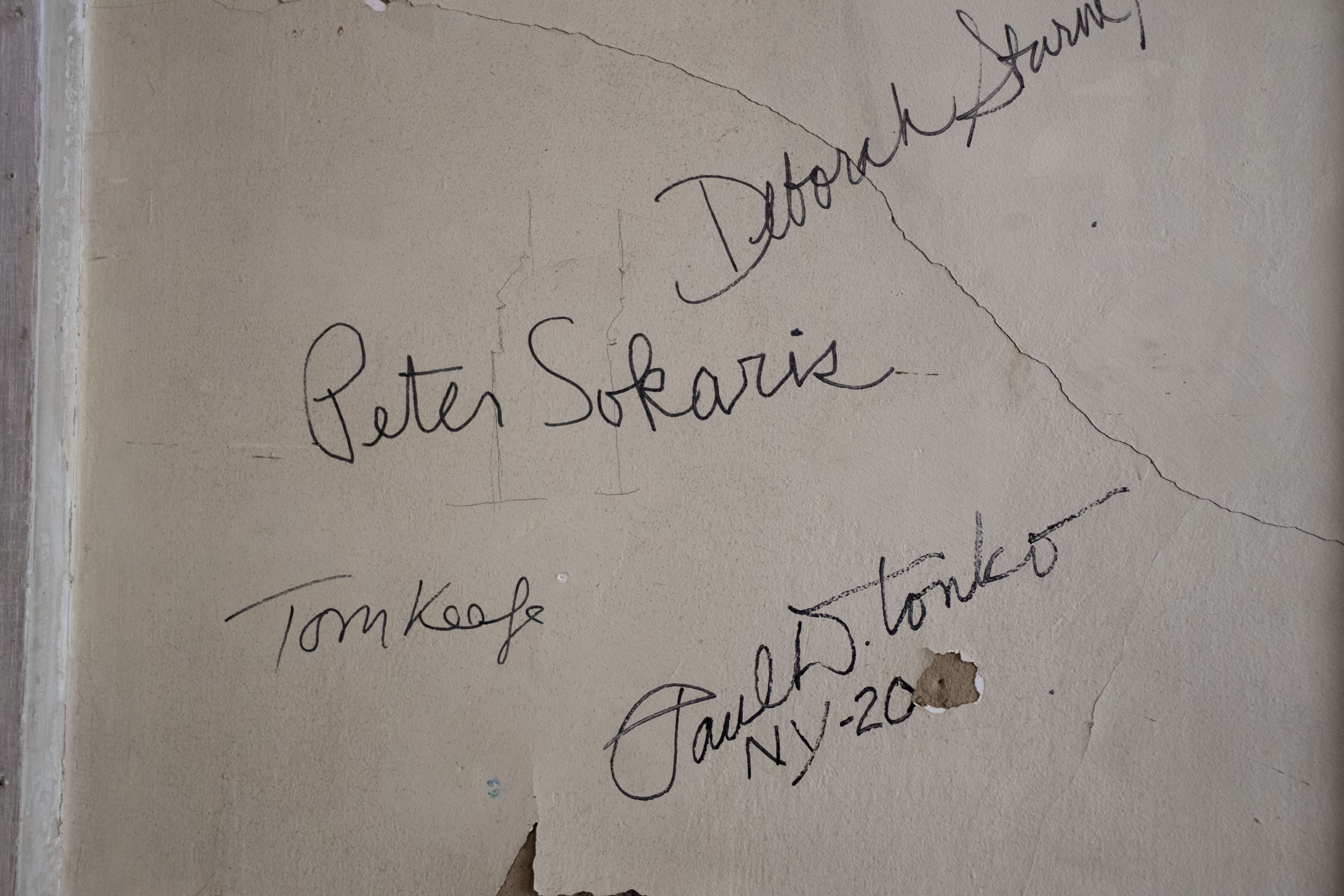 Written in a permanent market, signatures of Underground Railroad History Project supporters adorn the walls —including the signature of Congressman Paul Tonko, NY 20
Written in a permanent market, signatures of Underground Railroad History Project supporters adorn the walls —including the signature of Congressman Paul Tonko, NY 20
The back parlor is a shared workspace. Two desks are pushed together in the middle of the room. It’s the office hub for all Underground Railroad History Project programming. Beyond the desks my attention was drawn to the brightly painted mural that travels up the stairs.
The mural, “Seeking Sanctuary” contains 100 events on a timeline that begins in 1741 with the NY Slave Conspiracy. “Each point highlights those who provided sanctuary, those who sought sanctuary, and those events in American and National history that caused the need for sanctuary,” said Stewart. “It reflects the fact that the Myers Residence was a place of sanctuary in antebellum New York and continues to be a place of sanctuary today as it is used to promote racial reconciliation and healing.” The mural was designed and painted in 2018 by teens in the Young Abolitionist Teen Scholars’ Institute lead by local professional artist Oliver Peters. The mural travels with visitors up the stairs to the second and third floors and to current events.
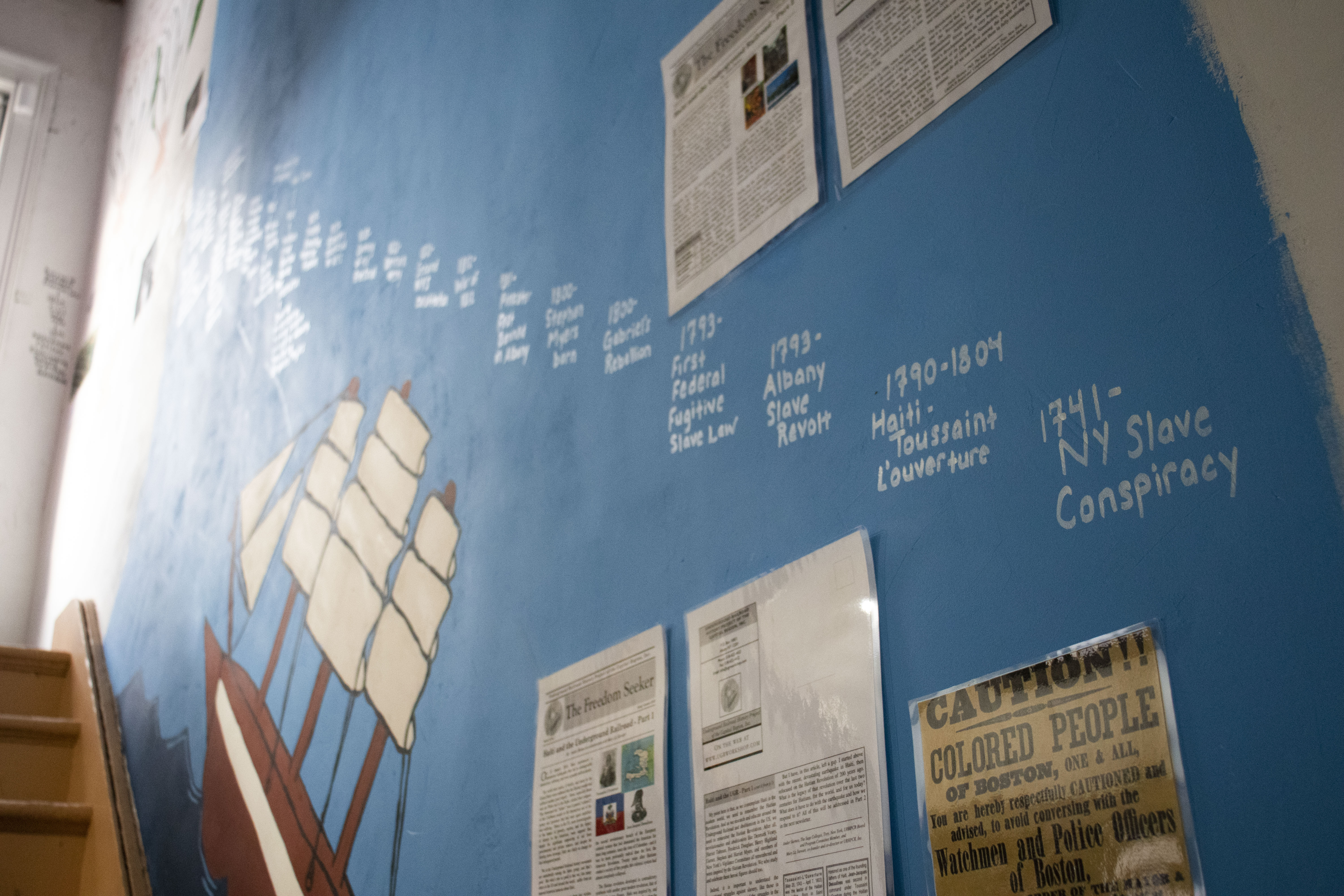 “Seeking Sanctuary” mural recognizes 100 events on a timeline beginning in 1741 highlighting people who provided sanctuary, those who sought sanctuary, and events in American and National history that caused the need for sanctuary.
“Seeking Sanctuary” mural recognizes 100 events on a timeline beginning in 1741 highlighting people who provided sanctuary, those who sought sanctuary, and events in American and National history that caused the need for sanctuary.
Artifacts Challenging Stereotypes
The back room of the second floor (once a bedroom and now the reading and exhibit room) is where visitors will find just a few of the artifacts found onsite. The Myers Residence uses archaeological artifacts that have been excavated on the property to tell more of its story. A pair of boots, pieces of a ceramic doll, a child’s tea set, slate pencils, and other artifacts are displayed. “There are a number of artifacts that had they been whole and intact, would have been part of a complete dinnerware,” shared Stewart. This dinnerware set found onsite is now used to share the Myers’ story and their role in Albany in society. “We use those pieces as a way to help displace some of the stereotypical notions that hover in public memory which usually suggest that free people [of color] before the Civil War did not have much. Finding artifacts like this [dinnerware] indicates the opposite for Harriet. This large collection of dinnerware pieces becomes an indicator of Harriet having a full set of matching dishes,” Stewart said. In addition to the artifacts changing previous stereotypical assumptions, the house plays an important role. “The house itself becomes an artifact...its ten rooms, the Greek Revival Style architecture, gas lighting, crown molding… all of these things are easily acquainted with the white wealthy families,” said Stewart. “This building speaks to both the wealth as well as the capacity of people of color before the Civil War who contributed to the health and vitality of the community which they were based.”
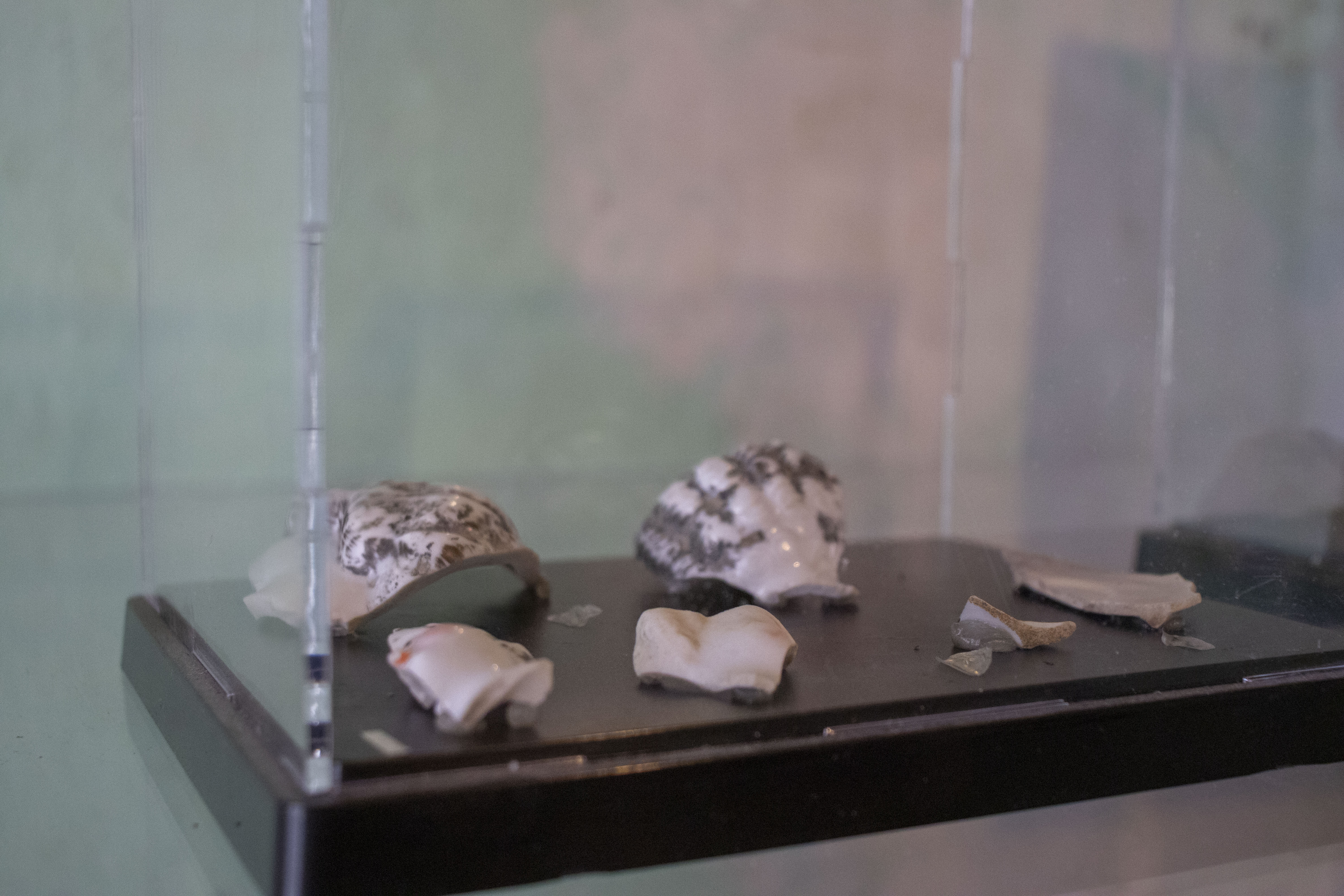 Pieces of a ceramic child’s tea set found on the property during archaeological excavations. This archaeological evidence reminds visitors that the Myers were also a family in addition to their work in civil rights activism.
Pieces of a ceramic child’s tea set found on the property during archaeological excavations. This archaeological evidence reminds visitors that the Myers were also a family in addition to their work in civil rights activism.
Paper Trail
There are also important paper documents about the Myers that have been discovered in recent years that help provide a more comprehensive understanding of their lives. Visitors can flip through copies of chattel mortgages (the originals safely held in the Albany County Hall of Records) that list items owned by Stephen and Harriet Myers used as loan collateral. “These are incredible records of their personal possessions that gives us the opportunity to have a better understanding of what their personal world was like, what daily life was like, and what we are going to do when it comes time to furnish the building,” Stewart said. The goal is to interpret the house on a multi-dimensional scale. To portray the lives of Stephen and Harriett Myers as more than abolitionists, but as community activists, parents, working and supporting their family. “They were people with full, rich lives who engaged with organizations and activities beyond the Underground Railroad activism...but all efforts that were about equity and civil rights.”
Leaving Empowered
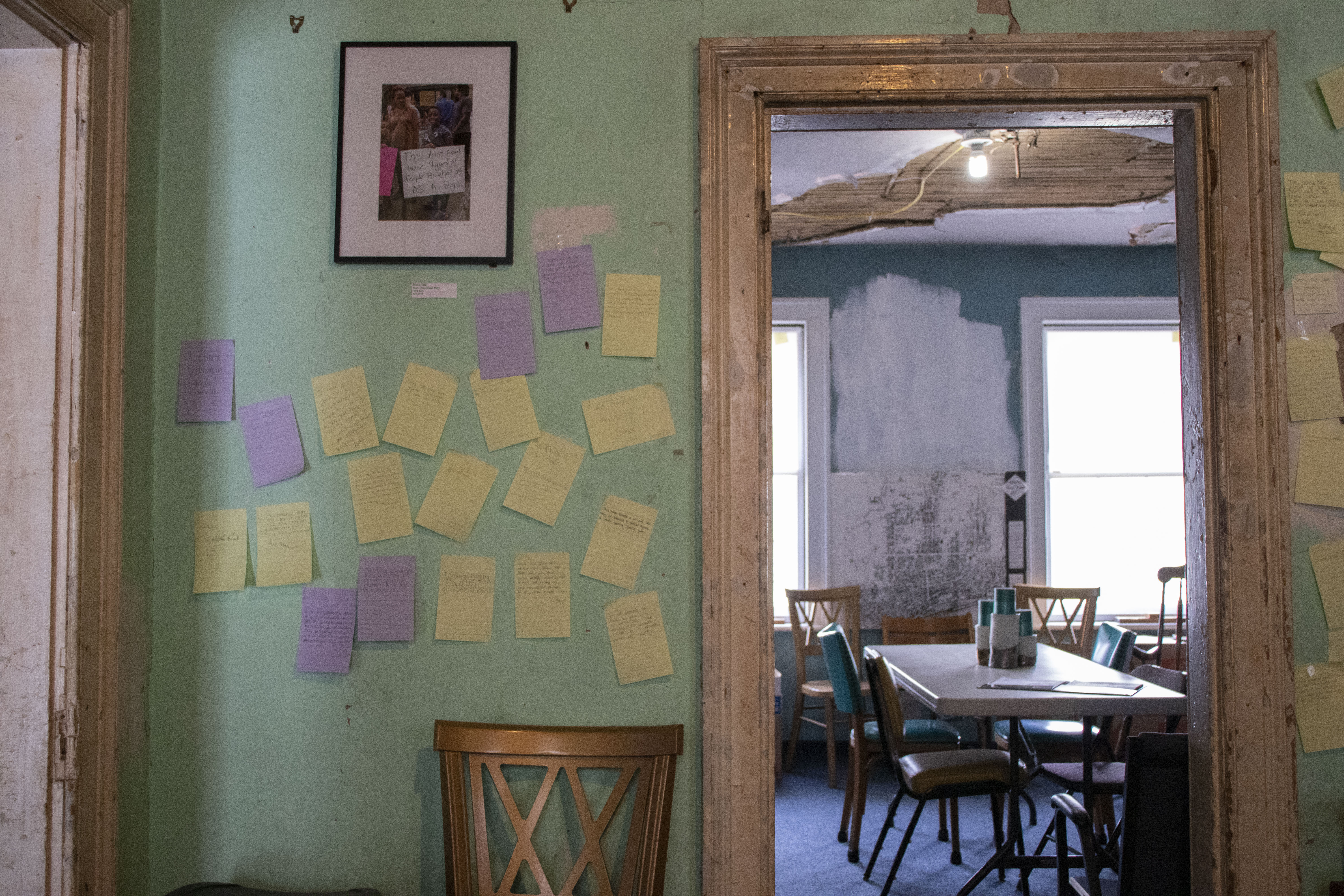 Comments left by visitors decorate the walls in the reading and exhibit room.
Comments left by visitors decorate the walls in the reading and exhibit room.
Stewart hopes that by using these artifacts in the interpretation of the house and its programming, visitors will connect with the Myers and draw connections from their lives in the 1850s to today.
There are post-it’s that cover the walls in this reading/exhibit room. These are thoughts left by visitors about their tour, about what they learned, what they liked, and how their visit affected them. It is an immersive experience.
“We want to empower people to engage and to become agents of change in their own networks, in their own communities working towards a more equitable and just society for everybody,” said Stewart. “We hope that when people come and become engaged with the Myers Residence, they will leave empowered and recognize that people of color have had a more significant impact on the American narrative.”
The Myers Residence is open for tours Monday to Friday, 5 – 8 PM and on Saturdays 12 – 4 PM.
For more information about the Myers Residence and the Underground Railroad History Project visit: https://www.undergroundrailroadhistory.org/
